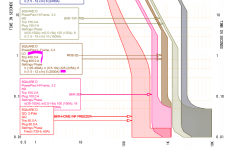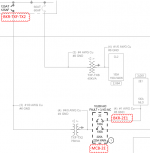designer82
Senior Member
- Location
- Boston
I like the way these breakers coordinate on the long time & short time. Question is on the instantaneous region... They all overlap and probably all trip on a maximum fault.
Question is... is it best to disable the instantaneous trip of the upstream breakers or keep it on and let them all trip on worst fault situation? What is best practice?
Picture for reference:

Thank You
Question is... is it best to disable the instantaneous trip of the upstream breakers or keep it on and let them all trip on worst fault situation? What is best practice?
Picture for reference:

Thank You





